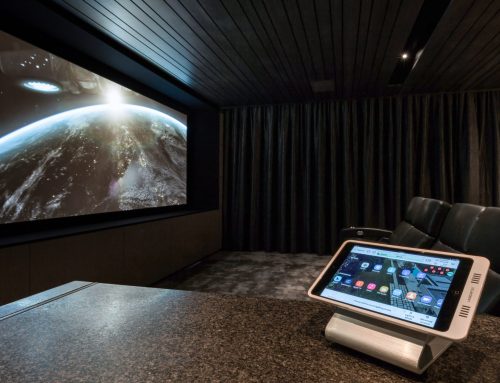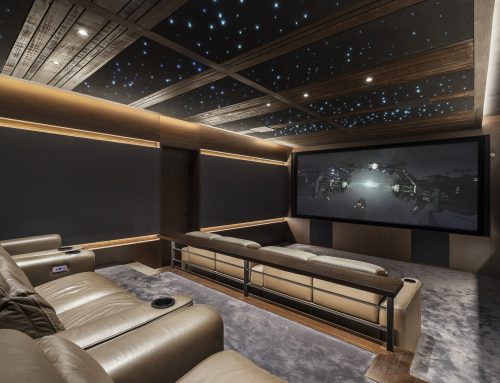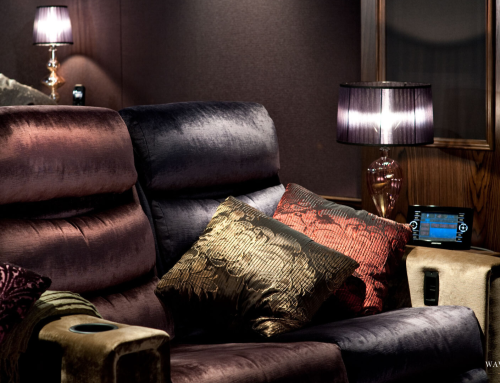When people think about a home cinema, their minds immediately go to crystal-clear projection and immersive surround sound. But there’s another element that is just as essential to creating a true cinematic atmosphere: lighting design.
Lighting doesn’t just make a home cinema room look good – it sets the tone, enhances the architecture, and controls how comfortable the space feels. In a well-designed home theatre, lighting is as carefully engineered as the audio and video systems, because without it, the experience is incomplete.
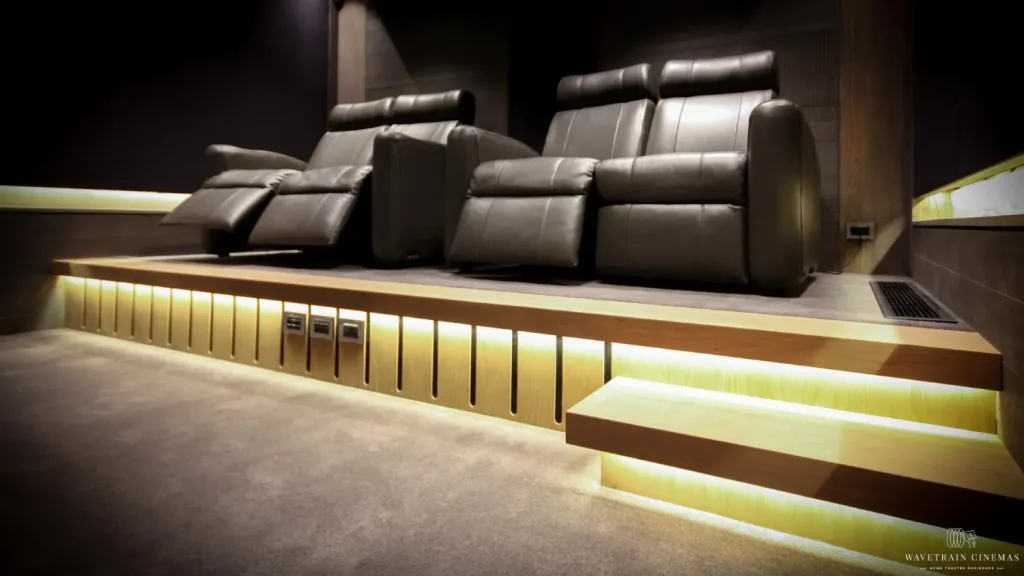
Why Lighting Matters in a Home Cinema
- Mood and Atmosphere
Lighting dictates how you feel when you walk into the room. Soft, indirect lighting creates calm and comfort. Dynamic presets can shift the mood instantly from casual family movie night to a dramatic Hollywood premiere. - Architecture and Detail
Good lighting highlights the textures, finishes, and architectural features of the room. From wall panels to ceiling shapes, lighting adds depth and dimension that make the cinema look as good as it sounds. - Comfort and Practicality
Watching in total darkness isn’t always ideal. A tailored lighting design provides pathways for safe movement, gentle ambient light to reduce eye strain, and practical task lighting for reading or entertaining before the film begins.
The Layers of Cinema Lighting
A professional luxury home cinema design uses layers of light, each serving a different purpose:
- Ambient Lighting
- The general level of light in the room. Usually indirect, dimmable, and evenly distributed to avoid glare on the screen.
- Accent Lighting
- Recessed LED lights, wall sconces, or concealed strip lighting that highlight architectural features or guide pathways. Creates drama and visual depth.
- Task Lighting
- Focused lights for specific activities, like reading, serving drinks, or operating equipment.
- Decorative Lighting
- Statement fixtures such as fibre-optic star ceilings or feature pendants that add personality without distracting from the movie.
Each of these layers is integrated into the design so they can be controlled individually or as part of a programmed scene.
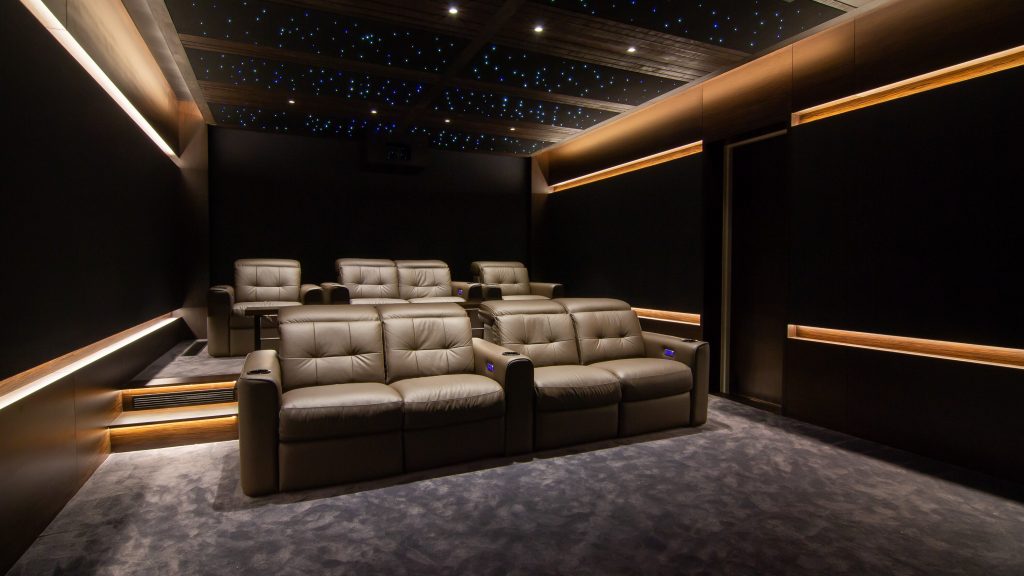
Smart Lighting Control: From Everyday to Epic
Modern lighting systems transform a cinema into a multi-purpose space. With smart control and automation, you can pre-set different lighting “scenes” for different uses:
- Welcome Scene: Bright, inviting light for entering the room.
- Pre-Show Scene: Subtle accent lights on walls and ceilings, creating anticipation.
- Movie or Gaming Mode: Lights dimmed or extinguished, leaving only concealed floor or step lights for safety.
- Intermission Scene: Low-level ambient lighting for snacks and conversation.
- Reading: Task and ambient lighting at brighter levels for non-cinema use.
With a single button, or even voice command, the room transitions seamlessly between these environments enhancing the home entertainment experience.
Integrating Lighting with Audio and Video
To deliver the best home cinema possible, lighting should never be an afterthought. It must be considered alongside the audio and video systems during the planning and design stage:
- Avoiding Screen Reflections: Poorly placed downlights or strip lighting can cause glare on the screen and ruin image contrast.
- Synchronisation with Projection and Sound: Some systems allow lighting to fade as the movie begins, mirroring the experience of a commercial theatre.
- Concealment and Discretion: Fixtures and fittings are integrated into the architecture, so the room feels dramatic but not cluttered.

The Wavetrain Approach to Lighting
At Wavetrain Cinemas, we view lighting as a core part of cinema design, not an accessory. Our process includes:
- Architectural Integration: Working with interior designers and architects to ensure lighting complements the space.
- Technology Alignment: Selecting dimming and control systems that integrate seamlessly with the cinema’s AV systems.
- Scene Programming: Pre-setting lighting modes for different activities, from movie nights to entertaining.
- Attention to Detail: Ensuring no light source causes reflections or distracts from the picture.
The result is a cinema that feels immersive, dramatic, and comfortable before, during, and after the movie.
Final thoughts
Lighting design is just as important as audio and video when building a world-class home cinema. It creates atmosphere, showcases architecture, and ensures comfort, all while enhancing the cinematic experience.
With a carefully layered plan and smart control systems, your cinema can shift from functional space to Hollywood spectacle at the touch of a button.
At Wavetrain Cinemas, we bring together audio, video, and lighting design into a single, seamless vision, so every cinema we create looks as spectacular as it sounds.

